Table of content
Stir-fried beef tripe, a dish that ignites the senses with its sizzling heat, tender texture, and bold spices, is a cornerstone of Chinese culinary artistry. Often referred to as bào chǎo niú dǔ in Mandarin, this dish transcends mere sustenance—it is a celebration of texture, a symphony of flavors, and a testament to the ingenuity of turning humble ingredients into gastronomic gold. For centuries, this dish has tantalized taste buds across Asia and beyond, earning its place in home kitchens, bustling night markets, and high-end restaurants alike. This article delves into the history, preparation, and cultural significance of stir-fried beef tripe, offering a comprehensive guide to mastering this fiery delight.
A Historical Tapestry: The Origins of Beef Tripe in Chinese Cuisine
The story of beef tripe begins not in grand imperial courts, but in the pragmatic kitchens of working-class communities. Tripe, the edible lining of a cow’s stomach, was historically valued for its affordability and resilience—qualities that made it a staple during times of scarcity. Early Chinese texts, such as the Qimin Yaoshu (Essential Techniques for the Welfare of the People), compiled during the Northern Wei Dynasty (386–534 CE), mention tripe as a ingredient in broths and stews, though its transformation into a stir-fried masterpiece came much later.
The rise of stir-frying as a cooking technique—a method that sears ingredients over high heat to lock in flavor and texture—aligned perfectly with tripe’s unique properties. By the Song Dynasty (960–1279 CE), street vendors in bustling cities like Kaifeng and Hangzhou began experimenting with quick-cooking methods, paving the way for dishes like stir-fried tripe. Over time, regional variations emerged: Sichuanese chefs added fiery chili peppers and numbing Sichuan peppercorns, while Cantonese cooks emphasized fresh ginger and crisp vegetables. Today, stir-fried beef tripe is a beloved dish that bridges class and geography, appearing on menus from Beijing to Bangkok.

The Anatomy of Flavor: Key Ingredients and Their Roles
At its core, stir-fried beef tripe is a study in contrasts: tender yet chewy, spicy yet savory, and aromatically complex. Achieving this balance requires a careful selection of ingredients.
-
Beef Tripe: The star ingredient, beef tripe comes in various forms, but the honeycomb tripe (known as mao du in Chinese) is prized for its texture—a lattice-like structure that traps sauces and spices. Fresh tripe requires thorough cleaning to remove impurities and odor, though many modern recipes use pre-blanched or frozen tripe for convenience.
-
Aromatics: Ginger, garlic, and scallions form the flavor foundation. Ginger cuts through the tripe’s gaminess, garlic adds pungency, and scallions contribute a fresh, grassy note.
-
Spices and Sauces: The dish’s fiery reputation stems from dried chili peppers, Sichuan peppercorns, and fermented black bean paste (doubanjiang). These ingredients create a layered heat that lingers without overwhelming.
-
Vegetables: Crisp vegetables like celery, bell peppers, or bok choy are often added for texture and color, though purists may omit them to let the tripe shine.
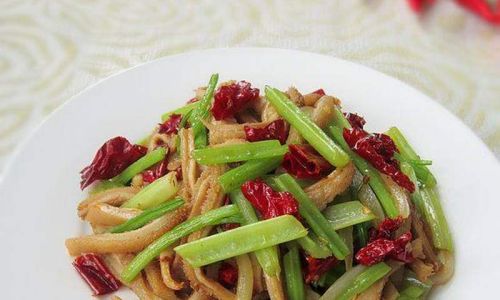
-
Seasonings: A blend of soy sauce, rice wine, and a touch of sugar balances the heat, while a final drizzle of sesame oil adds fragrance.
Mastering the Craft: Step-by-Step Preparation
Creating the perfect stir-fried beef tripe is as much about technique as it is about ingredients. The process can be divided into three phases: preparation, blanching, and stir-frying.
Preparation: Cleaning and Cutting
Fresh tripe requires meticulous cleaning. Rinse it under cold water, scrubbing gently to remove any residue. Some cooks soak it in a vinegar-water solution for an hour to neutralize odors. Once clean, parboil the tripe for 30–40 minutes until tender but not mushy. Drain and slice it into thin, bite-sized strips against the grain to maximize tenderness.
Blanching: The Secret to Tender Perfection
Blanching serves two purposes: it further tenderizes the tripe and removes any lingering impurities. Bring a pot of water to a rolling boil, add a slice of ginger and a splash of rice wine, then submerge the tripe for 1–2 minutes. Drain and shock in cold water to halt cooking. This step ensures the tripe remains crisp during stir-frying.
Stir-Frying: The Alchemy of Heat and Speed
Stir-frying is a dance of timing and temperature. Heat a wok over high heat until smoking, then add oil (peanut or vegetable oil works best). Toss in aromatics—ginger, garlic, and dried chilies—and stir-fry for 10 seconds until fragrant. Add the tripe and stir-fry vigorously for 2–3 minutes, ensuring each piece is coated in oil.

Next, introduce the sauce: a mixture of soy sauce, rice wine, sugar, and fermented black bean paste. Stir-fry for another minute, then add vegetables if using. Finish with a sprinkle of Sichuan peppercorns and a drizzle of sesame oil. The dish should be served immediately, garnished with chopped scallions, to preserve its sizzling heat and vibrant flavors.
Pro Tips: Elevating Your Stir-Fried Tripe Game
- Texture is Key: Overcooking tripe turns it rubbery; undercooking leaves it chewy. Aim for a tender yet slightly resilient texture, often described as “al dente.”
- Spice Management: Adjust chili quantities to taste. For a milder version, remove chili seeds or use paprika for color.
- Flavor Layering: Marinate the tripe briefly in a mix of soy sauce and cornstarch before stir-frying to enhance flavor and prevent sticking.
- Wok Height: Use a well-seasoned carbon-steel wok for optimal heat distribution. Avoid nonstick pans, which cannot withstand high temperatures.
Cultural Significance: More Than Just a Meal
Stir-fried beef tripe holds a special place in Chinese cultural traditions. During festivals like Chinese New Year, it symbolizes prosperity and resilience—qualities embodied by the tripe’s ability to withstand intense heat. In Sichuan, the dish is often served at banquets as a testament to the region’s fiery culinary identity.
Beyond symbolism, the dish reflects broader themes of resourcefulness. Tripe, once considered a byproduct, has been elevated to gourmet status through skillful preparation. This transformation mirrors China’s own history, where necessity bred innovation and even the humblest ingredients became sources of pride.
Regional Variations: A World of Tripe Delights
While the classic Sichuan-style stir-fried tripe dominates menus, regional adaptations abound:
- Cantonese-Style: Emphasizes freshness, with minimal spice and a focus on ginger and scallions.
- Hunan-Style: Incorporates smoked chili paste and fermented soybeans for a smoky, deeply savory profile.
- Thai-Inspired: Adds lemongrass, basil, and fish sauce for a Southeast Asian twist.
- Korean-Style: Marries tripe with gochujang (chili paste) and kimchi for a tangy-spicy fusion.
Health Benefits: Nutrition Meets Nourishment
Beyond its culinary appeal, stir-fried beef tripe offers nutritional benefits. Tripe is rich in protein, collagen, and vitamin B12, which supports gut health and immune function. The dish’s spices, such as ginger and garlic, boast anti-inflammatory properties, while chili peppers contain capsaicin, known to boost metabolism. However, moderation is key due to the dish’s sodium and fat content.

Modern Adaptations: Tripe in the 21st Century
As global palates evolve, chefs are reimagining tripe in innovative ways. In fusion cuisine, tripe appears in tacos, ramen bowls, and even gourmet burgers. Food trucks in cities like New York and London serve tripe fries topped with chili oil and cheese, while Michelin-starred restaurants plate tripe with foie gras and truffle foam. These adaptations honor the ingredient’s heritage while pushing culinary boundaries.
Conclusion: A Timeless Tribute to Tradition
Stir-fried beef tripe is more than a dish—it is a narrative etched in flames and flavors. From its humble origins to its global ascent, it embodies the resilience of culinary traditions and the joy of sharing food across cultures. Whether enjoyed in a bustling Sichuan night market or a home kitchen, this fiery masterpiece invites us to savor the past while embracing the future. So, fire up your wok, gather your ingredients, and embark on a journey through the sizzling world of stir-fried beef tripe. Your taste buds will thank you.
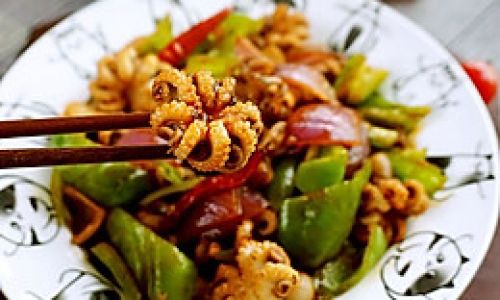
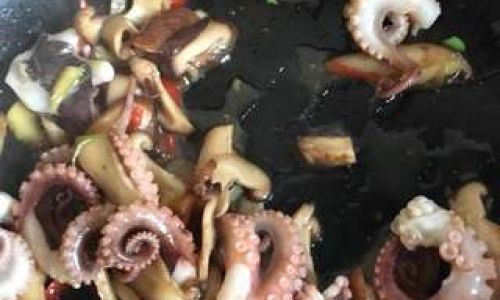
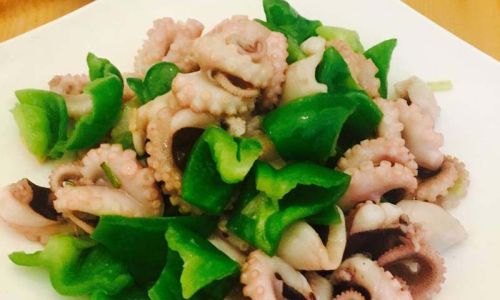
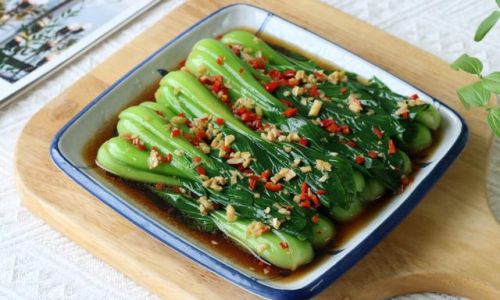

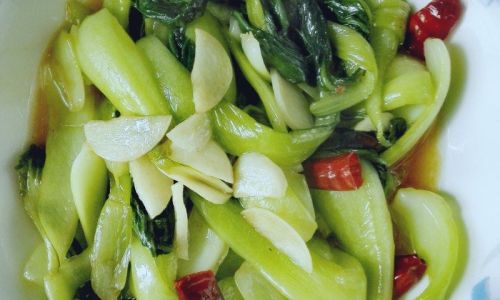
0 comments